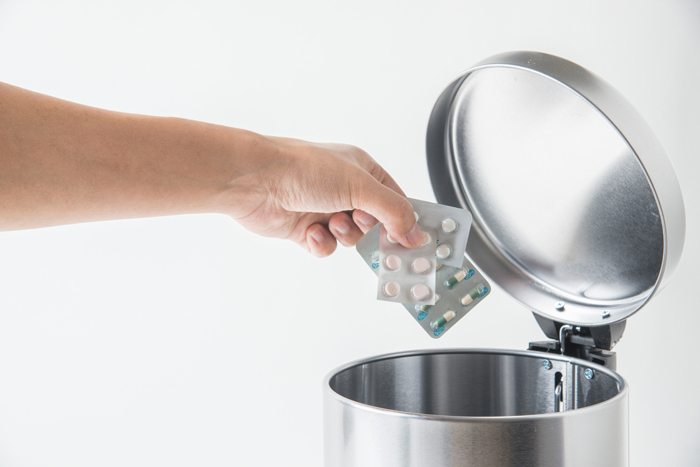How to Dispose of Controlled Substances
Learn the requirements for the proper disposal of Schedules I through V controlled substances.

There is a lot of confusion about the proper and legal disposal of Drug Enforcement Agency (DEA) controlled substances in a clinical setting. Controlled substances are drugs that have the potential for abuse or dependence, and are regulated by the DEA to help prevent misuse. The Controlled Substances Act (CSA) divides controlled substance drugs into five categories called schedules:
- Schedule I includes drugs that have no accepted medical use, such as heroin.
- Schedule II drugs are used medically but have high abuse potential, such as morphine. Their purchase, storage and usage are strictly monitored.
- Schedules III through V drugs have decreased abuse potential and range from sedatives to cough suppressants, such as codeine.
What Constitutes Proper Disposal of DEA Controlled Substances
Disposal generally refers to a wide range of activities that result in a controlled substance being rendered unavailable for further use. A controlled substance can be disposed of by destruction, return, recall, sale or through the manufacturing process. When disposing of by destruction, the drug must be rendered non-retrievable. Non-retrievable means to permanently alter the controlled substance’s physical or chemical condition through irreversible means, making it unavailable and unusable for all practical purposes. Incineration is the only method currently accepted by the DEA to render a drug non-retrievable. Sewering (pouring down the drain) and landfill disposal (mixing with kitty litter, coffee grounds, etc.) does not meet the DEA’s non-retrievable standards. In a clinical setting, this means controlled substances should not be simply placed into a sharps container or non-hazardous pharmaceutical waste container. That’s because these methods could allow the controlled substance to be poured out and used, making them retrievable. In Arizona, regulations prohibit medication disposal into sewers unless specific permission has been granted by the wastewater treatment authority. The DEA intends to allow public and private entities to develop a variety of destruction methods that are secure, convenient and responsible — however, they must also meet all other applicable federal, state, tribal and local laws.How to Stay DEA Compliant
Although the DEA states that it seeks to determine a variety of destruction methods, the only acceptable method of destruction for pharmaceutical wastage (i.e., drugs dispensed to a patient and not fully used, such as a single dose vial or syringe with remaining controlled substance) at this time is incineration. Therefore, the only method that currently meets the DEA requirement for both the non-retrievable and destruction standards involves a two-part process:- Wasting the medication into a suitable neutralizing media, such as a Cactus Smart Sink or an Rx Destroyer. A solidifier can also be used for liquid only waste.
- Placing the neutralized container into a non-hazardous pharmaceutical waste container that will be sent out for incineration.